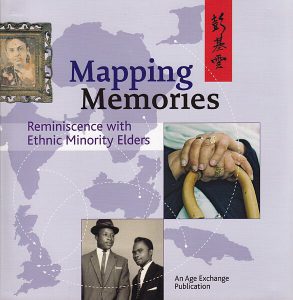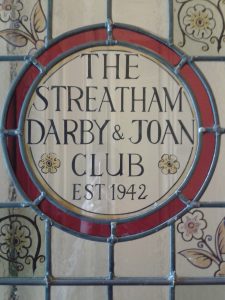Prof Jill Manthorpe and Dr Katharine Orellana both work on the NIHR ARC South London Social Care Theme from within the NIHR Policy Research Unit in Health and Social Care Research, King’s College London. (1226 words)
Many stories are being told relating Black history in and about South London. Some of them are coming from people who staffed or volunteered in local social care services. These are largely unsung stories of efforts to meet the needs of London’s new migrant populations. In this blog we highlight some of the developments that were taking place in South London over 30 years ago in older people’s day services and others outside the statutory sector (although many were supported by local council grants). South London was for many years the location for Age Concern nationally (in Mitcham) and the pan-London body, Age Concern/Age UK London (in Camberwell then Elephant and Castle) as well as Black groups that had interests in social care such as the Afiya Trust (in Vauxhall). Where possible we provide links to the items we found.
 South London is still the home of one of the leading national, even international, organisations that has proven the value of oral history and reminiscence among older people of different faiths, cultures and heritages. Founded in 1983 by Pam Schweitzer MBE, Age Exchange is based in Blackheath. Her ‘Mapping Memories’ collection remains a key resource for families, volunteers and care staff working with older people from different ethnic backgrounds.
South London is still the home of one of the leading national, even international, organisations that has proven the value of oral history and reminiscence among older people of different faiths, cultures and heritages. Founded in 1983 by Pam Schweitzer MBE, Age Exchange is based in Blackheath. Her ‘Mapping Memories’ collection remains a key resource for families, volunteers and care staff working with older people from different ethnic backgrounds.
In 1985 a day centre for older people from BME backgrounds was opened in Lewisham. The Calabash Centre, developed by community development worker Cecile Murray and supported by Lewisham Council’s former leader, Andy Hawkins, was set up to provide a safe space for the older BME community and lasted several decades. However, referrals and usage dropped and, in October 2019, the Council decided to merge the Centre with two other Council commissioned day centres to make savings of £135,000. This meant Calabash would stop being a dedicated BME centre. A statement from the director of the Centre for Caribbean and Diaspora Studies at Goldsmith University, Professor Joan Amin-Addo, who presented the history of the Calabash Centre to Lewisham Council’s Healthier Communities Select Committee in October 2019, was read out by historian Dr Marl’Ene Edwin. Prof Amin-Addo’s statement said: “The black elderly were not using council’s provision, the provision was underused, because they found most centres unwelcoming. Cecile Murray, initially with scant resources, painstakingly gained support that made possible this space for the black elderly group that is firmly underpinned by cultural specific practices… That space was recognised then and remains now potentially state of the art provision for the care of the black elderly who are vulnerable to shifting racial dynamics.” Mayor Damien Egan said the comments on racism were something he “would dispute” but that he understood “passions were high”.
 In July 2003, at the long-established Woodlawns Centre which initially housed the Streatham Darby and Joan Club (founded 1942), the Make A Difference Afro-Caribbean Senior Citizens Group was set up. This Group was founded by Gloria Bailey who had joined the Streatham Darby and Joan Club in 2002. Mrs Bailey realised that the club had very few members from the black community, despite being based in an ethnically mixed area. Make A Difference usually (COVID-19 exceptions) organises annual celebrations of Commonwealth Day, Black History Month and Remembrance Day. It has strong links with other organisations; such as the Victoria League for Commonwealth Friendship, a branch of which was launched at Woodlawns in 2007. Woodlawns is now a Community Hub in Lambeth housing a variety of groups and resources.
In July 2003, at the long-established Woodlawns Centre which initially housed the Streatham Darby and Joan Club (founded 1942), the Make A Difference Afro-Caribbean Senior Citizens Group was set up. This Group was founded by Gloria Bailey who had joined the Streatham Darby and Joan Club in 2002. Mrs Bailey realised that the club had very few members from the black community, despite being based in an ethnically mixed area. Make A Difference usually (COVID-19 exceptions) organises annual celebrations of Commonwealth Day, Black History Month and Remembrance Day. It has strong links with other organisations; such as the Victoria League for Commonwealth Friendship, a branch of which was launched at Woodlawns in 2007. Woodlawns is now a Community Hub in Lambeth housing a variety of groups and resources.
Other aspects of earlier Black history reflecting a social care and social work involvement include The Mango Club, in Coldharbour Lane, Brixton, run by West African Albert King Harman-Lewis, a former social worker with the Colonial Office, who, upon retirement, had used his club as a social work centre to solve his customers’ ‘domestic problems’. Sadly, we could not find more details of Mr Harman-Lewis. The informative Black London Histories website makes further reference to welfare officers and charitable social workers who sometimes met new migrants at train stations. It notes that welfare officers, though too few, were provided by the various West Indian High Commissions, as well as the Colonial Office. Their history too needs to be told.
Black history is also represented in other more formal parts of social care, with the Black barrister Jocelyn Gibbs being appointed to chair the panel of enquiry into allegations of abuse at Nye Bevan Residential Care Home for the Elderly by London Borough of Southwark. The panel’s report, issued in July 1987, was one of an early set of reviews into what we now refer to as failures or scandals in adult safeguarding.
Towards the end of the last century, there were more strategic attempts to ensure statutory services were meeting the needs of BME older people. Age Concern London was in the fortunate position of benefiting from relationships built up by Age Concern bodies in London, when investigating the primary care needs of older people from black and minority ethnic groups. It contacted the local groups that Age Concern organisations (now Age UK groups) in London recommended and referred to them in their letter of introduction. This produced a very positive and successful response: ‘The Views of Black and Minority Ethnic Older People’ (Primary Care Briefing Paper 3, Age Concern London, 1997).
Again strategically, Age Concern London’s (Age Concern was the predecessor of Age UK) Information and Advice Strategy (2002) provides details of Age Concern Bromley’s Information and Advice Service that was funded by Bromley Racial Equalities Council (BREC). While information and advice services are often hard to report from a historical perspective unless they are linked to major providers, this report suggests a realisation at the turn of the millennium that information and advice were needed by BME older people and that they might be best suited to being located in existing community groups and points of access, such as health services.
More recent strategic work by local councils includes a very large consultation with Black Caribbean residents of Lambeth in 2013. The report of this exercise spans a range of subjects, covering support for businesses and activities for young people. In relation to ageing it reveals uncertainties about treatment of and support for older people and the impact of local changes of values, respect for tradition and social cohesion. Such reports are not always easy to find but will be important documents for future historians, especially if the data that are collected (surveys and interview recordings) can be archived securely.
Finally, at the present time, Black History Month was celebrated this year by Anchor Hanover, a major national housing and care provider with care homes in South London. Its website features Mona Clement Edwards (aged 89) who lives at Rose Court in Rotherhithe, Southwark, who talks of her personal and professional history since coming to England in 1957.
These short glimpses of South London’s support for its older citizens reflect the very limited historical interest in social care. While the internet has given us a greater sense of activity, few groups report their history. We found reference to some groups and organisations that appear to have disappeared or merged but could not follow this up. Black History Month provides the opportunity to stimulate interest in this important area of life in South London.
Prof Jill Manthorpe and Dr Katharine Orellana both work on the NIHR ARC South London Social Care Theme from within the NIHR Policy Research Unit in Health and Social Care Research, King’s College London.